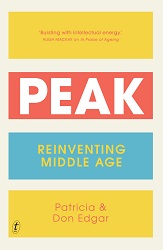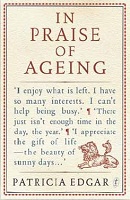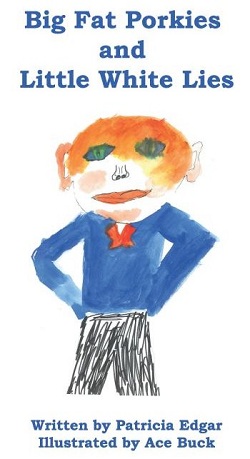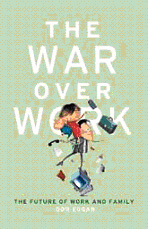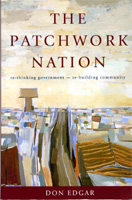
Patricia Edgar & Don Edgar

The housing challenge: is Homeshare the answer?
|
By Patricia Edgar - posted Wednesday, 11 November 2015 |
The timely report from the Population Research Institute (The Age November 2) warns our housing crisis is acute and will not be solved by older households downsizing. Their over 50 year old occupants plan to stay put, with good reason, occupying 60 per cent of free- standing houses with back yards. They are happy where they are in familiar surroundings, and many of those who might consider moving to a smaller property are deterred by the costs of renovation, agents, surveyor and legal fees, and the pernicious stamp duty payable on a new property. As well, accessing their capital can mean losing their pension, leaving them financially worse off in a smaller house.
The authors of the Report, Bob Birrell and David McCloskey are demographers stating the facts; they were careful not to make judgments. But the shrill response, Hands off homes, say angry seniors (The Age Nov 3) is a case of kill the messenger. Of course it is not valid to point the finger and blame older citizens for 'blocking out' young couples with children from owning detached housing in central suburbs. This limited supply of family homes has come about through lack of foresight and planning by our local councils and by politicians, with their focus on the bottom line, on housing for first time young and single buyers looking for apartments in the inner city or moving them out to the sticks with few amenities and a long commute. No one has been looking at the needs at the top end of the market or new ways of adapting to our changing demographic patterns.
In greater Melbourne alone there are 30,777 lone person households, in the over seventy age group, with two or more bedrooms. The Birrell report states that Melbourne will need an extra 355,000 homes by 2022 and Sydney an extra 309,000. As people live longer and desire independence over aged-care facilities, they prefer to remain in the homes they own, thus creating social dilemmas for the old and the young. So we are in need of strategic thinking and creative solutions to address the facts, rather than polarized responses by Seniors' Groups.
Even if living alone by choice, we need company, support, places to go and the means to get there. We know that older adults' health and well being improve when they have varied opportunities to stay socially engaged as part of a familiar community. To achieve successful longevity we need to adapt.
Today's younger generation too is making adjustments, having to live with their parents longer, sometimes conducting relationships under the same roof as they remain in study, work and save, search for a job and are unable to buy into the high-priced housing market. In 1976, 67% of 24 year olds were married. In 2011, 14% were married. More are deciding they won't marry, nor will they have children. By 2031 it is predicted the proportion of families with children (38 %) will be overtaken by couples without children (43%) and lone-person households are forecast to increase by 73% to constitute some 3.2 million households.
These demographic changes are further complicated by the fact that Australia has 35.5 percent of its people, over the age of 60, defined as living in poverty, unable to find work or to access the pension, and public housing spaces have declined over the last decade. As well, it is claimed, it will cost $214 million in one year to pay for people older than 65 who are eligible for the National Disability Insurance scheme. So where is the creative thinking needed?
Yes there will be a surfeit of underused housing stock based on traditional household patterns, with many older people occupying a large house too big for their needs and requiring upkeep but with no alternative if they are to maintain their quality of life and avoid a life in an old age-care facility.
The time has come for multi-generational living. There has been a shift in housing arrangements over the past three decades along these lines as the marriage demographics have changed. Renovations on the family home are adding bathrooms and living space and increasingly grandma or grandpa is joining in if their house is not the home already.
Alongside living changes involving multi-generational families, there are ingenious models for intergenerational living cropping up around the globe under the umbrella of Homeshare. This movement has its roots in the USA where the first programs were started in 1972. The concept spread to the UK in the 1990's and to Australia in 2000. Homeshare speaks to loneliness and isolation; lack of affordable housing; relationships between people of different ages; quality of life; asset sharing versus asset competition.
In Australia the idea is spreading and about to start in all States and Territories. Sharing arrangements are flexible. It is all about finding the right match. Program coordinators screen all applicants, suggest matches and either refer one person to another, or support people to choose a suitable match. Low income singles can be offered rent-free homes with senior citizens in return for help with the daily chores. The nature of those chores is negotiated.
Homeshare has potential in the service delivery landscape for those with less profound disabilities with offers of housing assistance being made in exchange for practical support.
By coincidence Homeshare's international conference is was held in Melbourne on November 5th and 6th to promote their ideas, which seem to have promise in assisting some who live in single households and would like to share their living space in exchange for assistance with their needs. Given that housing our population - the old and the young - has become a contentious challenge, unlike any seen before, we should look closely at innovations such as Homeshare to service mutual needs to help maintain neighbourhood connections that sustain us.

